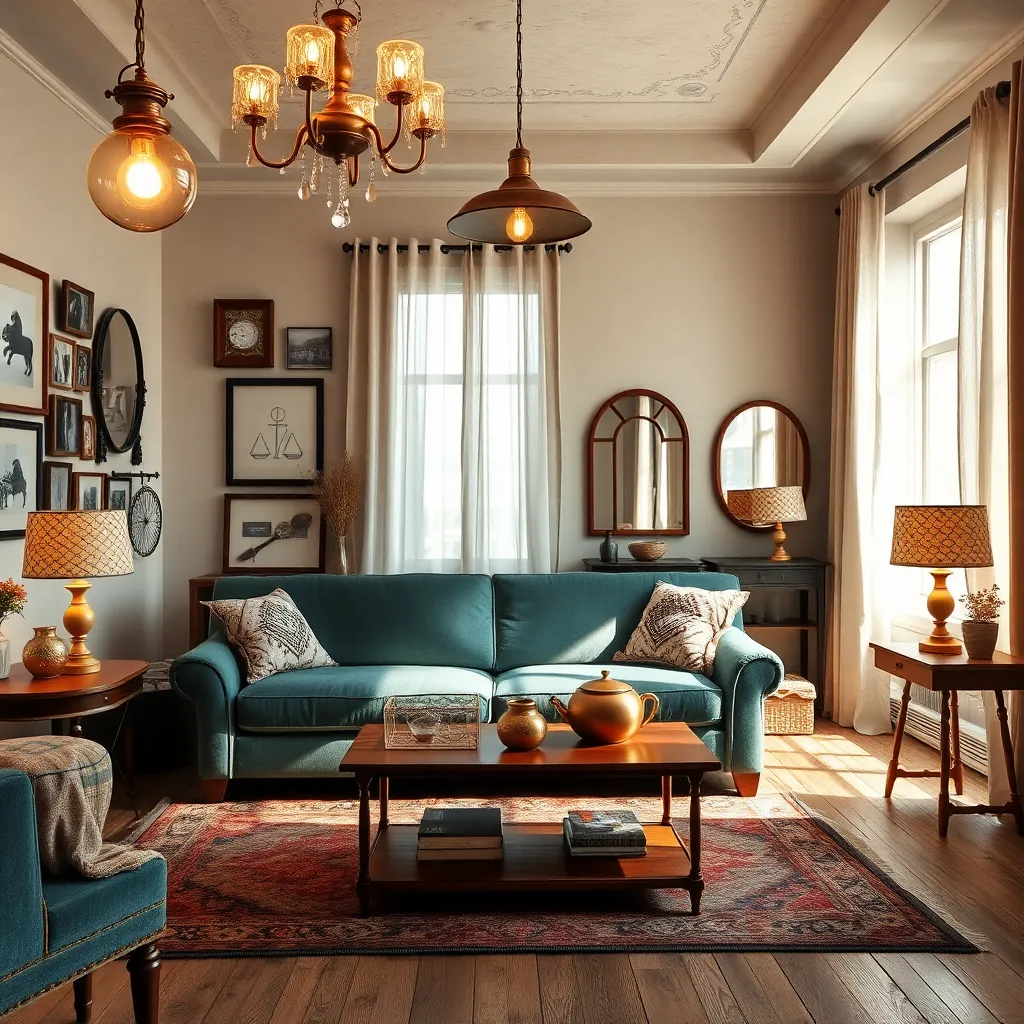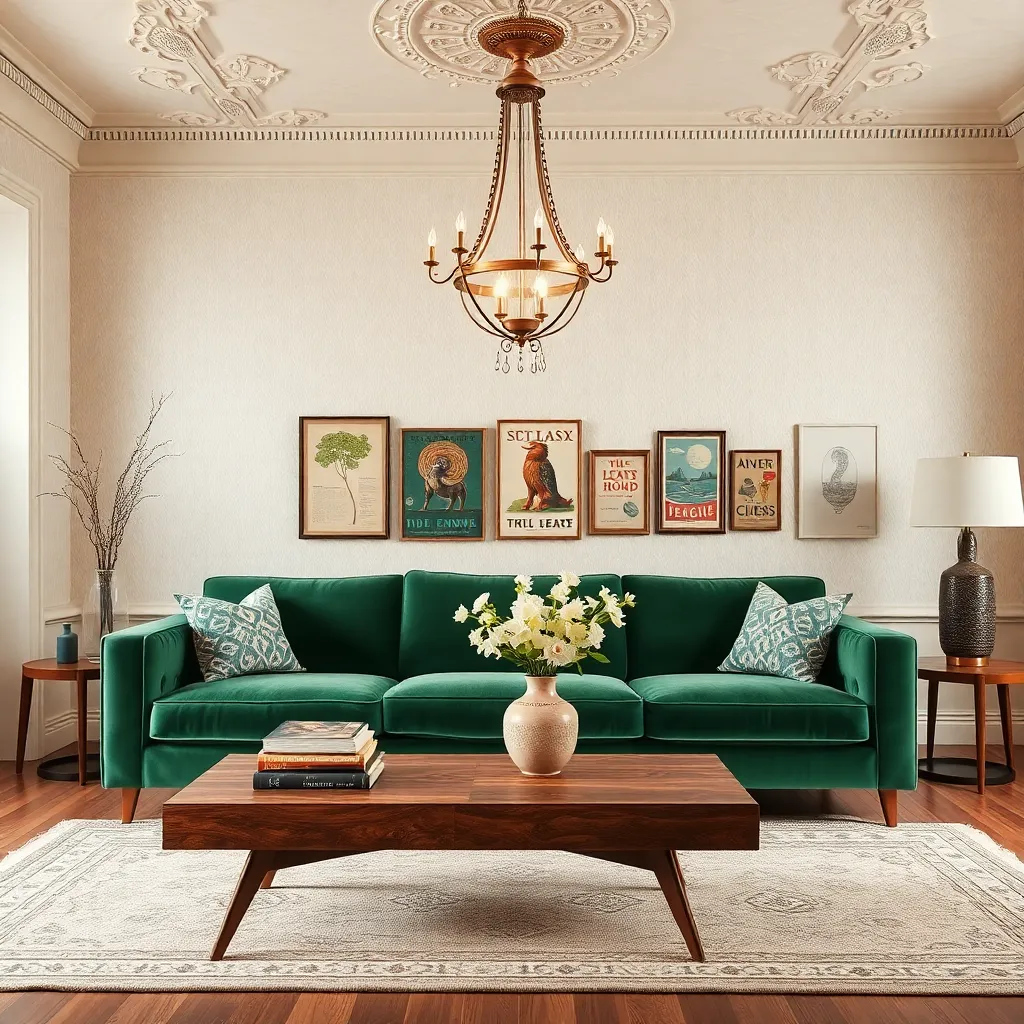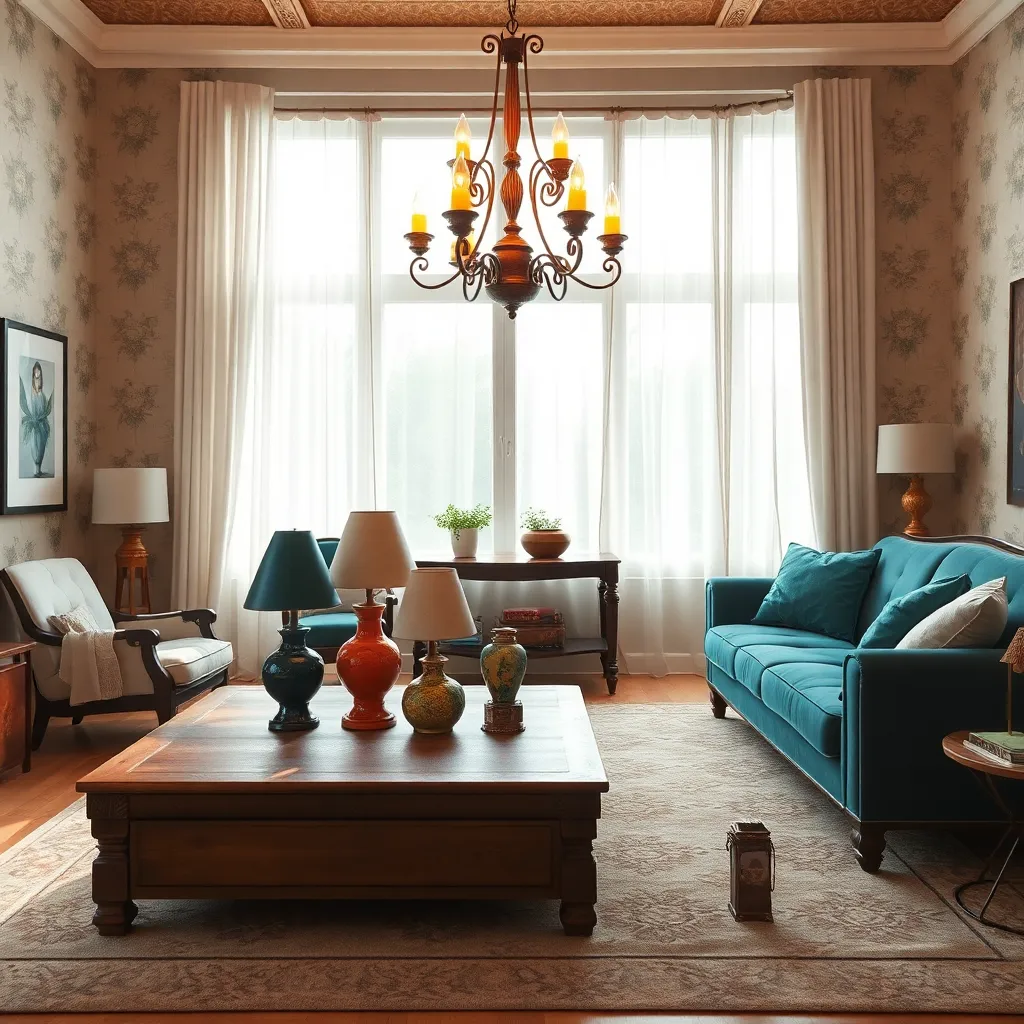In the world of interior design, few elements can transform a space quite like lighting, and vintage fixtures offer a charming blend of history and style that resonates with both the novice and the seasoned decorator. These timeless pieces do more than just illuminate a room; they tell a story, infusing spaces with character and warmth that modern fixtures often strive to replicate. Whether you’re new to home decorating or a seasoned pro, understanding the allure of vintage lighting can elevate your design game to new heights.
For beginners eager to make a statement, vintage lighting fixtures offer an accessible entry point into the art of blending the old with the new. Their unique designs and craftsmanship provide an opportunity to experiment with aesthetics while adding a personal touch to your home. Meanwhile, experienced decorators will find that these fixtures can serve as focal points or subtle accents, allowing for creative expression and the chance to revisit classic design eras. By incorporating vintage lighting, you can effortlessly harmonize different styles within your home, from mid-century modern to rustic farmhouse.
In this article, we’ll delve into the fascinating world of vintage lighting fixtures, exploring their history, styles, and how to choose the right piece for your home. You’ll learn practical tips on sourcing authentic fixtures and integrating them seamlessly with your existing decor. Additionally, we’ll discuss maintenance and care, ensuring these timeless pieces continue to shine brightly in your space. With a blend of inspiration and practical advice, you’ll be well-equipped to embrace the charm and elegance of vintage lighting in your own home.
Exploring Vintage Lighting Styles

Vintage lighting styles can dramatically transform any room by adding a touch of history and elegance. To integrate these fixtures seamlessly, consider the existing color palette in your space and select lights that either complement or contrast for a bold statement.
When choosing vintage lighting, it’s important to be mindful of the material and finish as they can influence the overall aesthetic. Opt for fixtures made from brass, wrought iron, or aged copper to enhance the nostalgic charm in your design.
Placement is key when working with vintage lighting to ensure it highlights the room’s features without overwhelming the space. Hang a statement chandelier in the center of a dining room for a classic look, or use sconces to frame a mirror or artwork in the living room for a more subtle effect.
For those looking to mix vintage with modern, consider pairing a retro pendant light with sleek, minimalistic furniture. This combination can create a balanced look that feels both timeless and contemporary, offering a unique personal touch to your home.
Choosing the Right Fixture Era

Choosing the right fixture era for your home can make a significant impact on the overall aesthetic and feel of your space. Consider the architectural style of your home as a starting point, as this can guide you towards appropriate vintage lighting styles that complement your existing features.
Incorporating fixtures from the same era as your home can create a cohesive and authentic look. For example, if you live in a mid-century modern home, opting for sleek, minimalist designs with materials like teak or brass can enhance the space.
Alternatively, mixing eras can add a unique touch and personal flair to your interior decor. For beginners, start by introducing a single statement piece from a different era, like an ornate Art Deco chandelier, to create a focal point in a contemporary setting.
Advanced decorators might explore blending multiple vintage styles within a single room for a curated, eclectic vibe. Consider using a color palette that ties different eras together—such as muted pastels or bold jewel tones—to maintain a harmonious balance.
To ensure your chosen fixtures shine, strategically position them in areas where they can be admired, such as above dining tables or in entryways. This not only enhances the room’s lighting but also allows the fixture to serve as a captivating conversation piece.
Incorporating Fixtures into Modern Spaces

To effectively incorporate vintage lighting fixtures into modern spaces, begin by emphasizing contrast. Pair an ornate antique chandelier with sleek, minimalist furniture to create a striking visual focal point that seamlessly blends old and new.
Consider the color palette when integrating vintage fixtures. Use neutral tones like white, gray, or beige on walls and large furniture pieces, allowing the rich patina and intricate details of the vintage fixture to stand out.
Experiment with mixing materials to add depth and interest to your space. Combine metal fixtures with wooden or glass elements in your decor to create a cohesive yet dynamic environment.
For beginners, start with a single statement piece, such as a vintage pendant light in the dining area. It can effectively anchor the room while providing a conversation starter for guests.
Advanced decorators might layer different lighting sources for added dimension. Use vintage sconces alongside modern recessed lighting, ensuring each fixture complements the overall design without overwhelming it.
Placement is critical; hang vintage fixtures at an appropriate height to maximize their impact. Ensure chandeliers and pendants are positioned to provide adequate light while enhancing the architectural features of the room.
Restoring and Maintaining Vintage Lights

Restoring vintage lighting fixtures starts with a thorough inspection to identify any wear or damage. Look for signs of rust, loose wiring, or missing components, as these are common issues with older pieces.
Begin by cleaning the fixture using a soft cloth and a mild cleaning solution to remove dust and grime. For stubborn rust spots, gently use fine steel wool or a specialized rust remover, ensuring you don’t damage the original finish.
Rewiring is often necessary to ensure safety and functionality. Consider hiring a professional if you’re inexperienced, as this process involves handling electrical components and can be complex.
When choosing new bulbs, opt for LED options that mimic the warm glow of vintage incandescent bulbs, enhancing the fixture’s nostalgic charm. Additionally, ensure the bulb’s shape and size are compatible with the fixture to maintain its authentic look.
To maintain these lights, regularly dust the fixtures and inspect for any signs of wear. Apply a protective wax or sealant to metal components to prevent future rusting and ensure longevity.
Placement is crucial in showcasing vintage lights effectively. Position them in areas where they can serve as focal points, such as above a dining table or in a reading nook, to draw attention to their unique design.
For those wanting to experiment further, consider pairing vintage lights with modern furniture to create a striking contrast. This mix of old and new can add depth and interest to your space, keeping it both timeless and dynamic.
Sourcing Authentic Vintage Lighting

When sourcing authentic vintage lighting, begin by exploring local antique shops and flea markets, where you can often find unique pieces with history. Look for fixtures with original finishes and hardware to ensure authenticity and add charm to your space.
Online marketplaces such as eBay and Etsy are treasure troves for vintage lighting, offering an extensive range of options at various price points. Be sure to check seller ratings and reviews to ensure you’re purchasing from reputable sources and receiving quality items.
Consider joining local or online vintage decor groups, where enthusiasts often share tips and leads on where to find the best vintage lighting. In these communities, you can also gain insights into how to identify authentic pieces and avoid replicas.
To incorporate vintage lighting into your home, use a mix of styles to create a curated look that feels personal and collected over time. Pair a 1920s art deco chandelier with modern furniture to create a stunning contrast and a focal point in your living room.
For a cohesive design, think about the existing color scheme in your room and choose fixtures that complement it. Vintage brass or copper pieces can add warmth to a neutral palette, while colored glass fixtures can introduce a subtle pop of color to a minimalist setting.
Conclusion: Growing Success with These Plants
In exploring the charm of vintage lighting fixtures, we unraveled five key relationship concepts that illuminate our connections: the importance of authenticity, the beauty of uniqueness, the value of history, the need for maintenance, and the transformative power of perspective. Like a cherished heirloom, authentic relationships shine brightest when grounded in truth. Embracing uniqueness enriches our bonds, while appreciating shared histories fosters deeper understanding. Regular maintenance keeps relationships vibrant, and a fresh perspective can reignite the spark.
Now, take a moment to reflect on these insights and choose one concept to apply to a relationship in your life. Whether it’s writing a heartfelt note to a loved one or planning a date that revisits a meaningful memory, small actions can lead to lasting impact.
As you embark on this journey, remember to bookmark this article. It’s a resource you’ll want to revisit, offering guidance and inspiration as you continue to nurture your relationships.
By integrating these timeless principles, you’re setting the stage for enduring relationship success. With each step, you’re crafting a legacy of love that will stand the test of time.
